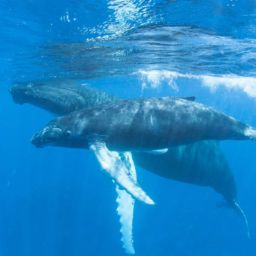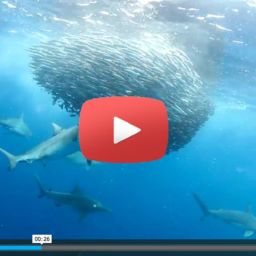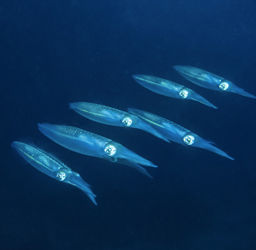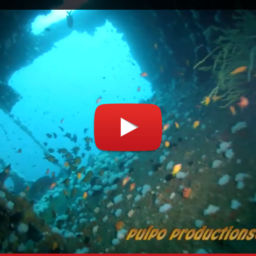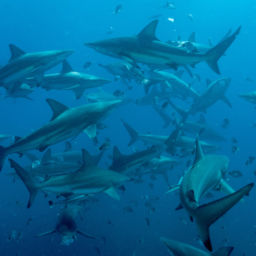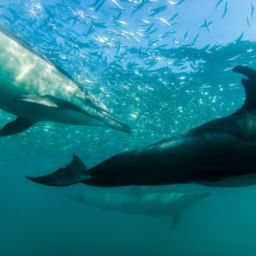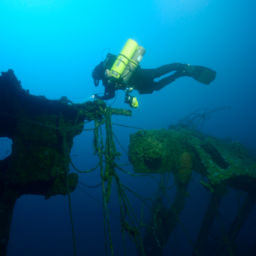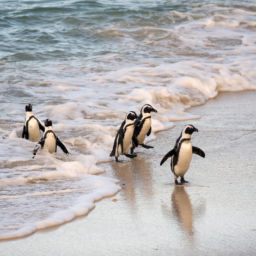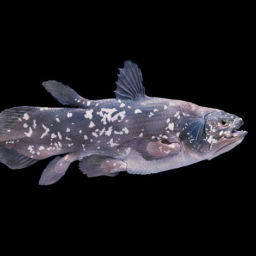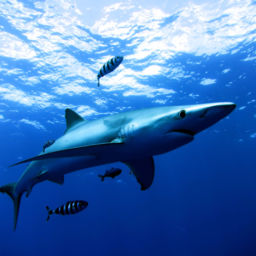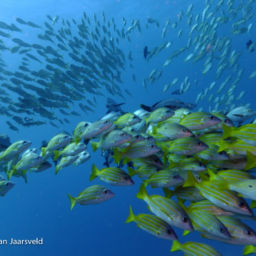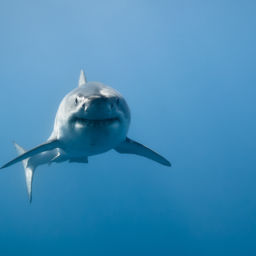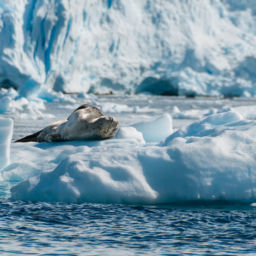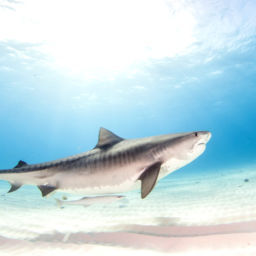In June of 2014 the international diving community suffered a great loss when technical diver Peter Timm died after a search and recovery mission to 197 feet off South Africa’s Aliwal Shoal. One of Timm’s most memorable contributions to the sport was as a member of the dive team that discovered a population of coelacanths off Sodwana Bay, South Africa, in October 2000. Until 1938, when ichthyologist J.L.B. Smith identified a deceased coelacanth specimen, these prehistoric fish were believed to have been extinct for around 70 million years. The discovery of an extant population of Sodwana Bay coelacanths by Timm, Pieter Venter and Etienne le Roux while on a trimix training dive to 340 feet constituted the first ever coelacanth encounter on scuba. Timm was also part of a return expedition to verify the original sighting, and since then had completed hundreds of dives to depths greater than 330 feet in the Sodwana area, photographing coelacanths and contributing to an identification database. Through his dive center, Triton Dive Charters, Timm led many more expeditions to the world’s only coelacanth colony shallow enough to be scuba-accessible.
The Sodwana Bay Coelacanths
The search for the modern-day coelacanth began on December 22, 1938 when the captain of a South African fishing trawler discovered a strange fish in his nets. Upon docking in East London, Captain Hendrik Goosen alerted the curator of the East London museum to his find, whereupon the curator, Marjorie Courtenay-Latimer, sent a sketch of the fish to J.L.B. Smith for identification. Incredibly, the fish was found to be a living specimen of a species that lived around 400 million years ago. The species was named Latimeria chalumnae in honor of Courtenay-Latimer, and since 1938, coelacanths of this species have also been discovered off the coasts of Tanzania, Kenya, Mozambique, Madagascar and the Comoros Islands. In 1999, a second extant species of coelacanth, Latimeria menadoensis, was discovered off the coast of North Sulawesi in Indonesia. Until Timm and his companions encountered a living coelacanth in 2000, all specimens had either been found dead in fish markets, or seen alive only via submersibles.
Predominantly active at night, coelacanths favor deep-water caves and canyons at depths ranging from 330 to over 1,640 feet, in waters cool enough to facilitate their low metabolism. Sodwana Bay is an ideal habitat, thanks to the close proximity of the continental shelf and the presence of several deep canyons. Scientists believe that Sodwana’s cool offshore waters also explain why the coelacanth population here lives at a shallower depth than in other, more tropical locations. Just south of the Mozambican border on South Africa’s east coast, Sodwana Bay comes under the protection of the iSimangaliso Wetland Park and is a popular destination for both recreational and technical divers from all over the world.
It was during one such technical dive that Timm, Venter and le Roux encountered three coelacanths in Jesser Canyon in October 2000. Because Timm was leading the other two divers on a training dive, no one was carrying a camera. Determined to prove what they had seen, the three men returned with a team and suitable photographic equipment one month later to launch an expedition to find the coelacanths.
The team hit gold on the second dive of the expedition, finding and filming three more Sodwana Bay coelacanths in a deep-water cave. Tragically, that dive ended in disaster when cameraman Christo Serfontein experienced difficulties on the ascent. In an attempt to help him, second cameraman Dennis Harding ascended too quickly, and died shortly after surfacing. Serfontein received emergency recompression and survived. A return expedition in May 2001 by the same team yielded encounters with several more coelacanths, some of which had been seen in 2000; others were believed to constitute new sightings. With their 2000 and 2001 expeditions, Timm and his fellow explorers set several records. Not only were they the first people ever to see coelacanths in their natural habitat without the aid of a submersible, but they also discovered the African mainland’s first living colony of these ancient fish, which includes the largest recorded individual, measuring approximately 6.5 feet in length. Since their initial discovery in 2000, the coelacanths of Sodwana have been the subjects of several research initiatives, including tissue sampling by coelacanth expert Hans Fricke using a dart probe in 2003. These samples provided genetic proof that the Sodwana coelacanths were of the same species as those discovered in the Comoros.
Timm remained closely involved with coelacanth research after his initial discovery in 2000, and assisted with the most recent research expedition in 2013. During that expedition, which involved 44 trimix dives to the coelacanths’ natural habitat, 19 of the prehistoric fish were seen, including five confirmed re-sightings. The expedition also resulted in three new additions to the Sodwana Bay coelacanth photographic identification database, run by Dr. Kerry Sink of the South African National Biodiversity Institute, where there are 32 individual coelacanths recorded to date. During the 2013 expedition, one coelacanth was fitted with a data-logging satellite tag, which will provide information about the fish’s movements and habits. Since the discovery of the Sodwana Bay coelacanths 14 years ago, our knowledge of these fascinating living fossils has increased exponentially. In the wake of his tragic passing, Timm should be remembered as a diver who pushed the boundaries of human exploration to contribute to the discovery of one of nature’s most fascinating creatures.


